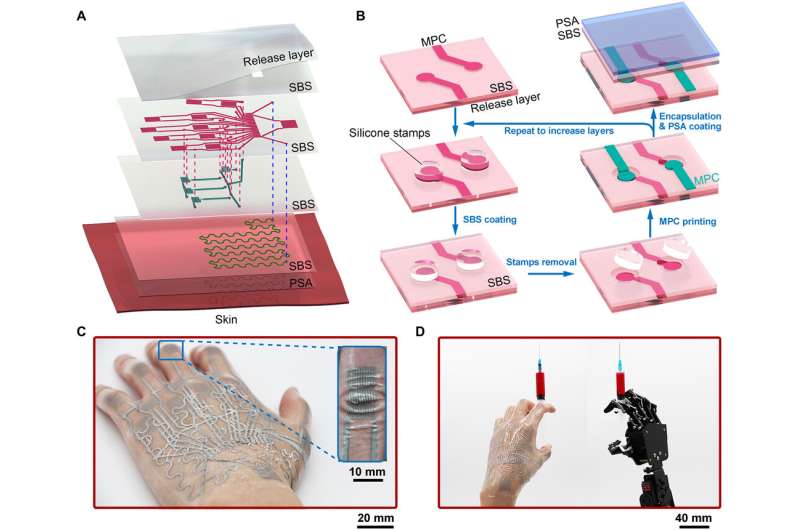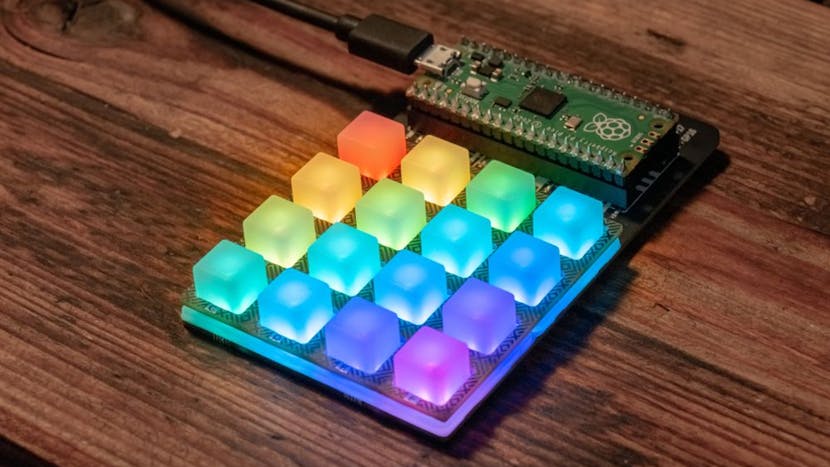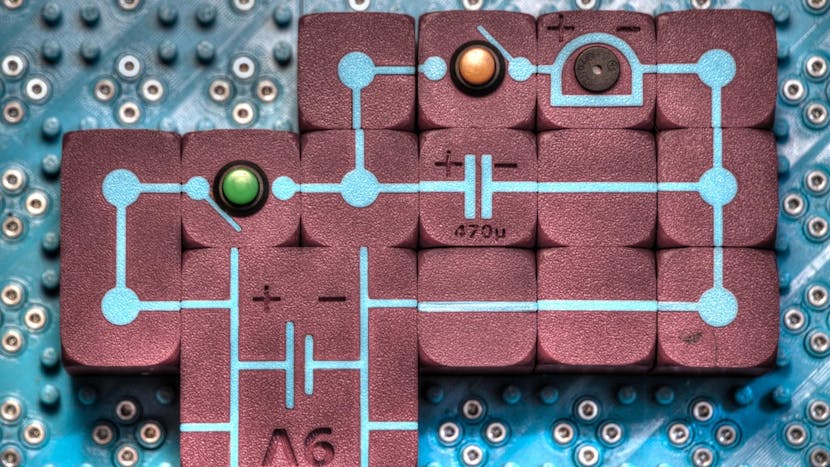Electronic tattoos can have applications during health and movement sensing on human skin. Nevertheless, the existing versions are nonconformal, sticky and multi-layered. In a new report, Lixue Tang and a research team in biomedical engineering and nanoscience in China achieved the multilayer integration of an 800 percent stretchable, conformal and sticky electronic tattoo. The construct allowed the crease amplification effect, which amplified the output signal of the integrated sensors by three times. The team showed the possibility of transferring the tattoo to a different surface to formed a firm attachment without solvent or heat. The researchers used a straightforward method to fabricate the tattoo based on a layer-by-layer strategy with two materials used to fabricate the circuit mode within the tattoo. The three-layered tattoo integrated one heater and 15 strain sensors for temperature adjustment to monitor movement and to remotely control robots.






